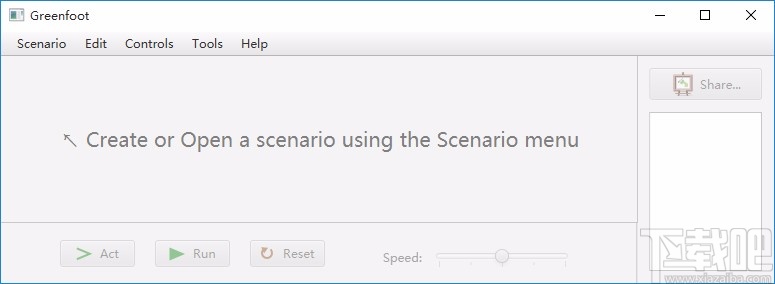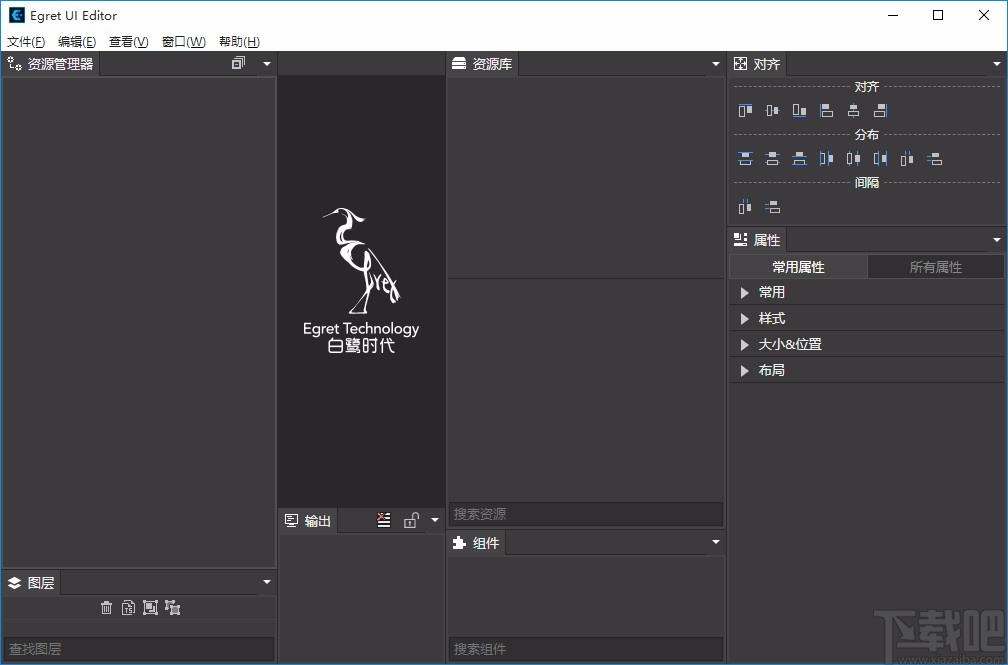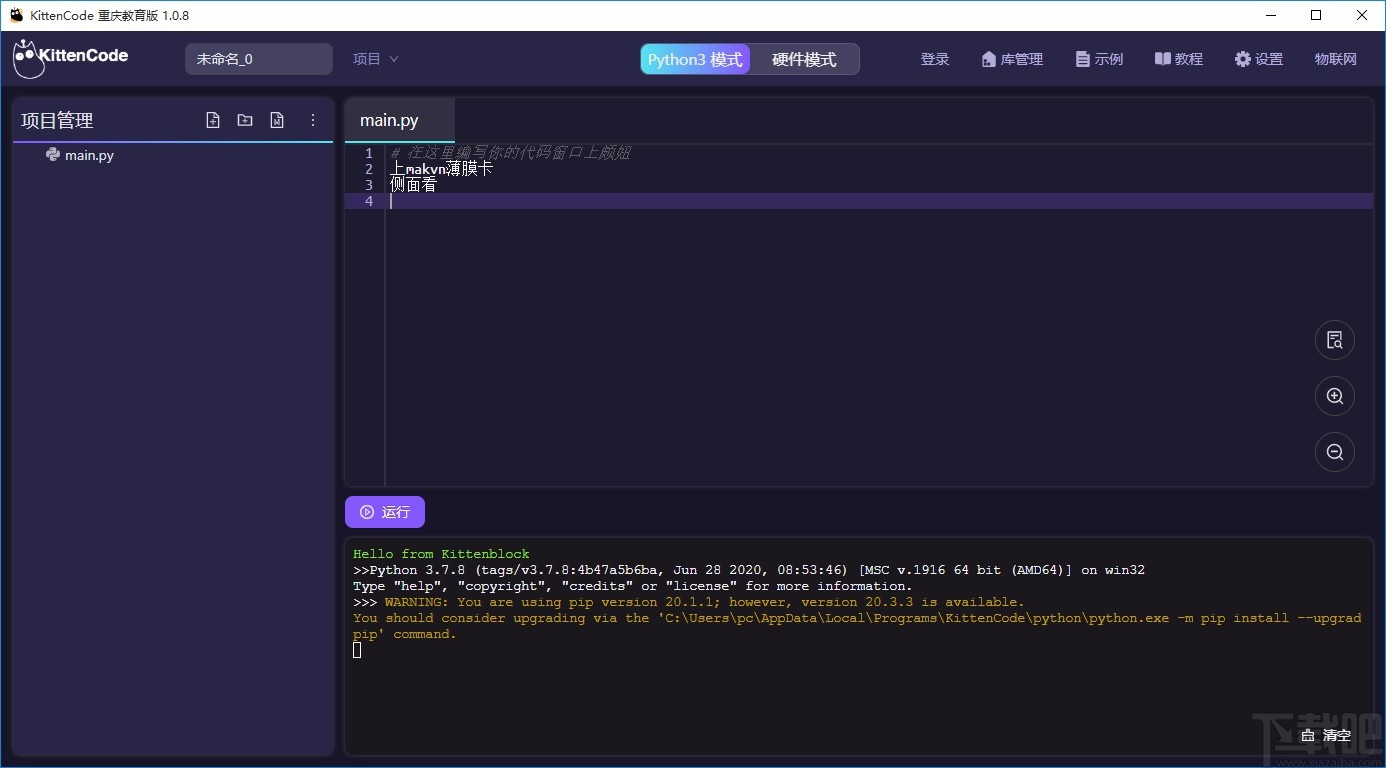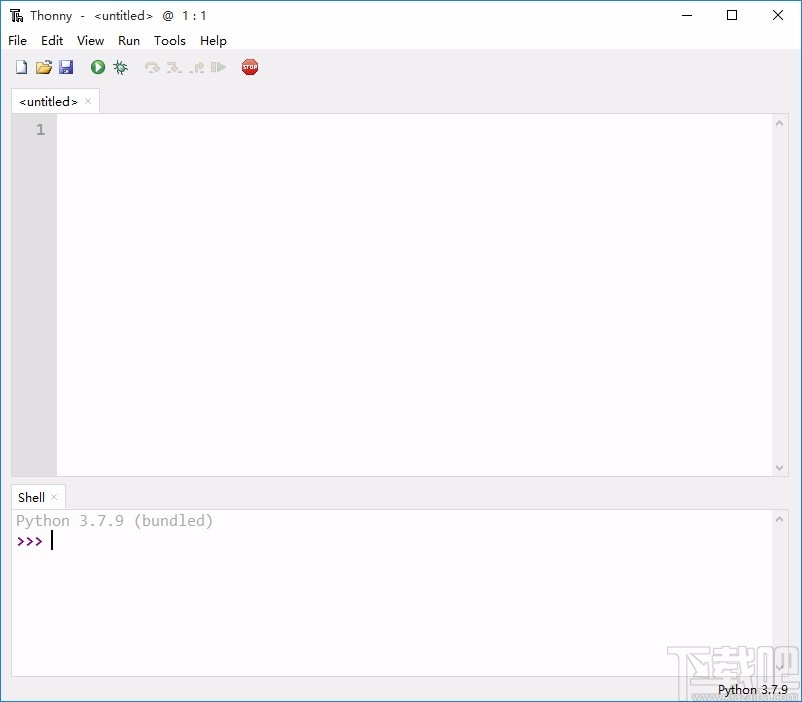Network Working Group B. Greenblatt
Request for Comments: 2649 P. Richard
Category: EXPerimental August 1999
An LDAP Control and Schema for Holding Operation Signatures
Status of this Memo
This memo defines an Experimental Protocol for the Internet
community. It does not specify an Internet standard of any kind.
Discussion and suggestions for improvement are requested.
Distribution of this memo is unlimited.
Copyright Notice
Copyright (C) The Internet Society (1999). All Rights Reserved.
Abstract
In many environments clients require the ability to validiate the
source and integrity of information provided by the Directory. This
document describes an LDAP message control which allows for the
retrieval of digitally signed information. This document defines an
LDAP v3 based mechanism for signing directory operations in order to
create a secure journal of changes that have been made to each
directory entry. Both client and server based signatures are
supported. An object class for subsequent retrieval are "journal
entries" is also defined. This document specifies LDAP v3 controls
that enable this functionality. It also defines an LDAP v3 schema
that allows for subsequent browsing of the journal information.
Table of Contents
1. IntrodUCtion . . . . . . . . . . . . . . . . . . . . . . . . 2
1.1 Audit Trail Mechanism . . . . . . . . . . . . . . . . . . . 2
1.2. Handling the Delete Operation . . . . . . . . . . . . . . . 5
2. Signed Results Mechanism . . . . . . . . . . . . . . . . . . 6
3. Security Considerations and Other Notes . . . . . . . . . . 7
4. References . . . . . . . . . . . . . . . . . . . . . . . . . 8
5. Authors" Addresses . . . . . . . . . . . . . . . . . . . . . 9
6. Full Copyright Statement . . . . . . . . . . . . . . . . . . 10
1. Introduction
In many environments clients require the ability to validiate the
source and integrity of information provided by the directory. This
document describes an LDAP message control which allows for the
retrieval of digitally signed information. The perspective of this
document is that the origin of the information that is stored in LDAP
v3 Accessible directories is the LDAP v3 client that creates the
information. The source and integrity of the information is
guaranteed by allowing for the digital signing of the operations that
make changes to entries in the directory. The source and integrity
of an individual LDAP connection can be guaranteed by making use of
an underlying session layer that provides such services, such as TLS.
Note that the integrity of an individual connection does not, in and
of itself guarantee the integrity of the data that comes across the
connection. This is due to the fact that the LDAP server is only
capable of providing information that it has stored. In distributed
and replicated environments, the fact that an entry has been
successfully retrieved from a server may not be completely
reassuring, if the entry in question was replicated from an untrusted
domain.
By making use of public key technology, and creating digitally signed
transactions that are created by the LDAP v3 client as entries are
created and modified, a complete journal of the history of the entry
is available. Since each entry in the journal has been digitally
signed with the private key of the creator, or modifier of the entry,
the source and integrity of the directory entry can be validated by
verifying the signature of each entry in the journal. Note that not
all of the journal entries will have been signed by the same user.
1.1. Audit Trail Mechanism
Signed directory operations is a straightforward application of
S/MIME technology that also leverages the extensible framework that
is provided by LDAP version 3. LDAP version 3 is defined in [4], and
S/MIME is defined in [2]. The security used in S/MIME is based in
the definitions in [1]. The basic idea is that the submitter of an
LDAP operation that changes the directory information includes an
LDAP version 3 control that includes either a signature of the
operation, or a request that the LDAP server sign the operation on
the behalf of the LDAP client. The result of the operation (in
addition to the change of the directory information), is additional
information that is attached to directory objects, that includes the
audit trail of signed operations. The LDAP control is (OID =
1.2.840.113549.6.0.0):
SignedOperation ::= CHOICE {
signbyServer NULL,
signatureIncluded OCTET STRING
}
If the SignatureIncluded CHOICE is used, then the OCTET string is
just an S/MIME message of the multipart/signed variety, that is
composed of a single piece, that is the signature of the directory
operation. Multipart/signed MIME objects are defined in [3]. If the
SignbyServer CHOICE us used, then the LDAP server creates the
signature on behalf of the client, using its own identity and not the
identity of the client, in order to produce the audit trail entry.
In either case the successful result of processing the control is the
creation of additional information in the directory entry that is
being modified or created. The signature of the LDAP operation is
computed on the LDAPMessage prior to the inclusion of the
SignedOperation control. The procedure is as follows:
- Build LDAPMessage without the SignedOperation control
- Compute signature on the above LDAPMessage
- Create new LDAPMessage that includes the old MessageID,
protocolOp and any control fields from the previous LDAPMessage,
plus the computed signature formatted as an S/MIME message.
No control is defined for the server to return in the LDAPResult as
defined in [4]. The LDAP server MAY attempt to parse and verify the
signature included in the SignedOperation control, but is not
required to. The server can accept the signed operation without
verifying the signature. Signature verification can be quite a
lengthy operation, requiring complex certificate chain traversals.
This allows a more timely creation of the audit trail by the server.
Any LDAP client browsing the directory that retrieves the "Changes"
(defined in the following paragraphs) attributes, should verify the
signature of each value according to the local signature verification
policies. Even if the LDAP server verifies the signature contained
in the singed operation, the LDAP client has no way of knowing what
policies were followed by the server in order to verify the
signature.
If the LDAP server is unable to verify the signature and wishes to
return an error then the error code unwillingToPerform(53) should be
returned, and the entire LDAP operation fails. In this situation, an
appropriate message (e.g. "Unable to verify signature") MAY be
included in the errorMessage of the LDAPResult. The SignedOperation
Control MAY be marked CRITICAL, and if it is CRITICAL then if the
LDAP Server performs the LDAP operation, then must include the
signature in the signedAuditTrail information.
The schema definition for the signedAuditTrail information is:
( 1.2.840.113549.6.1.0
NAME "signedAuditTrail"
SUP top
AUXILIARY
MUST (
Changes
)
)
The format of the Changes attribute is:
( 1.2.840.113549.6.2.0
NAME "Changes"
DESC "a set of changes applied to an entry"
SYNTAX "Binary" )
The actual format of the Changes attribute is:
Changes ::= SEQUENCE {
sequenceNumber [0] INTEGER (0 .. maxInt),
signedOperation [1] OCTET STRING }
The SignedOperation attribute is a multipart/signed S/MIME message.
Part 1 of the message is the directory operation, and part 2 is the
signature. Sequence number 0 (if present) always indicates the
starting point directory object as represented by the definitions in
"A MIME Content-Type for Directory Information", as defined in [5].
Subsequent sequence numbers indicate the sequence of changes that
have been made to this directory object. Note that the sequence of
the changes can be verified due to the fact that the signed directory
object will have a timestamp as part of the signature object, and
that the sequence numbering as part of the change attribute should be
considered to be an unverified aid to the LDAP client. Sequence
numbers are meaningful only within the context of a single directory
entry, and LDAP servers are not expected to maintain these sequence
numbers across all entries in the directory.
Some LDAP servers will only allow operations that include the
SignedOperation control. This is indicated by the inclusion of a
"signedDirectoryOperationSupport" attribute in the rootDSE. This
attribute is defined as:
1.2.840.113549.6.2.2
NAME "signedDirectoryOperationSupport"
DESC "how many of the LDAP operations must be signed"
SYNTAX "Integer" SINGLE-VALUE )
The "signedDirectoryOperationSupport" attribute above may have one of
the values, "0", "1" or "2" with the following meanings:
- "0" Directory Operations may be signed
- "1" Directory Operations must always be signed
- "2" Directory Operations must never be signed
Some LDAP servers will desire that the audit trail be continuous, and
not contain any gaps that would result from unsigned operations.
Such server will include a signature on each LDAP operation that
changes a directory entry, even when the LDAP client does not include
a signed-Operation control.
1.2. Handling the Delete Operation
The LDAP Delete operation represents an interesting case for Signed
Directory Operations. This is due to the case that subsequent to the
successful completion of the Delete Operation, the object that would
have held the latest "Changes" attribute no longer exists. In order
to handle this situation, a new object class is defined to represent
a directory object that has been deleted.
( 1.2.840.113549.6.1.2
NAME "zombieObject"
SUP top
STRUCTURAL
MUST (
Cn $ Changes $ OriginalObject
)
)
The format of the OriginalObject attribute is:
( 1.2.840.113549.6.2.1
NAME OriginalObject
DESC "The LDAP URL of an object that has been deleted from the
directory" SYNTAX "Binary" )
The OriginalObject attribute contains the URL of the object that was
deleted from the directory. It is formatted in accordance with RFC
2255. Directory servers that comply with this specification SHOULD
create a zombieObject when performing the delete Operation that
contains a SignedOperation LDAPControl. The Cn attribute of the
zombieObject is synthesized by the LDAP server, and may or may not be
related to the original name of the directory entry that was deleted.
All changes attributes that were attached to the original entry are
copied over to the zombieObject. In addition the LDAP Server MUST
attach the signature of the Delete operation as the last successful
change that was made to the entry.
2. Signed Results Mechanism
A control is also defined that allows the LDAP v3 client to request
that the server sign the results that it returns. It is intended
that this control is primarily used in concert with the LDAPSearch
operation. This control MAY be marked as CRITICAL. If it is marked
as CRITICAL and the LDAP Server supports this operation, then all
search results MUST be returned with a signature as attached in the
SignedResult control if it is willing to sign results for this user.
If the server supports this control but does not wish to sign the
results for this user then the error code unwillingToPerform(53)
should be returned, and the LDAP search will have failed. In this
situation, an appropriate message (e.g. "Unwilling to sign results
for you!") MUST be included in the errorMessage of the LDAPResult.
If the LDAPSigType has the value FALSE then the client is requesting
that the server not sign this operation. This may be done in
situations where servers are configured to always sign their
operations.
The LDAP control to include in the LDAP request is (OID =
1.2.840.113549.6.0.1):
DemandSignedResult ::= LDAPSigType
LDAPSigType ::= BOOLEAN
In response to a DemandSignedResult control, the LDAP v3 server will
return a SignedResult control in addition to the normal result as
defined by the operation (assuming that the server understands the
con- trol, and is willing to perform it). The SignedResult control
MUST NOT be marked CRITICAL. Some LDAP v3 servers may be configured
to sign all of their operations. In this situation the server always
returns a SignedResult control, unless instructed otherwise by the
DemandSigne-dResult Control. Since the SignedResult control is not
marked critical, the LDAP client is allowed to ignore it. The
signature field below includes the signature of the enitre LDAPResult
formatted as an S/MIME pkcs-7/signature object, as defined in [2].
The procedure for creating the signature of the signedResult control
is the same as the procedure for the creation of the signedOperation
control. The LDAP control in the LDAP response is (OID =
1.2.840.113549.6.0.2):
SignedResult ::= CHOICE {
signature OCTET STRING }
3. Security Considerations and Other Notes
The base OIDs are:
rsadsiLdap ::= {1 2 840 113549 6}
rsadsiLdapControls ::= {1 2 840 113549 6 0}
rsadsiLdapObjectClasses ::= {1 2 840 113549 6 1}
rsadsiLdapAttributes ::= {1 2 840 113549 6 2}
The complete ASN.1 module for this specification is:
SIGNEDOPERATIONS DEFINITIONS ::=
BEGIN
SignedOperation ::= CHOICE {
signbyServer NULL,
signatureIncluded OCTET STRING
}
Changes ::= SEQUENCE {
sequenceNumber [0] INTEGER (0 .. maxInt),
signedOperation [1] OCTET STRING }
DemandSignedResult ::= LDAPSigType
LDAPSigType ::= BOOLEAN
SignedResult ::= CHOICE {
signature OCTET STRING }
END
If any of the controls in this specification are supported by an LDAP
v3 server then that server MUST make available its certificate (if
any) in the userCertificate attribute of its rootDSE object. The
UserCertificate attribute is defined in [6], and contains the public
key of the server that is used in the creation of the various
signatures defined in this specification.
It is not the intention of this specification to provide a mechanism
that guarantees the origin and integrity of LDAP v3 operations. Such
a service is best provided by the use of an underlying protocol such
as TLS [8]. TLS defines additional features such as encryption and
compression. This specification does not define support for
encrypted operations.
This memo proposes protocol elements for transmission and storage of
the digital signatures of LDAP operations. Though the LDAP server
may have verified the operation signatures prior to their storage and
subsequent retrieval, it is prudent for LDAP clients to verify the
signatures contained in the chained attribute upon their retrieval.
The issuing Certification Authorities of the signer"s certificate
should also be consulted in order to determine if the signer"s
private key has been compromised or the certificate has been
otherwise revoked. Security considerations are discussed throughout
this memo.
4. References
[1] Kaliski, B., "PKCS 7: Cryptographic Message Syntax Version 1-5",
RFC2315, March 1998.
[2] Dusse, S., Hoffman, P., Ramsdell, B., Lundblade, L. and L.
Repka., "S/MIME Version 2 Message Specification", RFC2311, March
1998.
[3] Galvin, J., Murphy, S., Crocker, S. and N. Freed, "Security
Multiparts for MIME: Multipart/Signed and Multipart/Encrypted",
RFC1847, October 1995.
[4] Wahl, M., Howes, T. and S. Kille, "Lightweight Directory Access
Protocol (v3)", RFC2251, December 1997.
[5] Howes, T., Smith, M. and F. Dawson, "A MIME Content-Type for
Directory Information", RFC2425, September 1998.
[6] Wahl, M., "A Summary of the X.500(96) User Schema for use with
LDAPv3", RFC2256, December 1997.
[7] Howes, T. and M. Smith, "The LDAP URL Format", RFC2255, December
1997.
[8] Dierks, T. and C. Allen, "The TLS Protocol Version 1.0", RFC
2246, January 1999.
5. Authors" Addresses
Bruce Greenblatt
San Jose, CA 95119
USA
Phone: +1-408-224-5349
EMail: bgreenblatt@directory-applications.com
Pat Richard
Xcert Software, Inc.
Suite 1001 - 701 W. Georgia
Vancouver, BC
CANADA V6G 1C9
EMail: patr@xcert.com
6. Full Copyright Statement
Copyright (C) The Internet Society (1999). All Rights Reserved.
This document and translations of it may be copied and furnished to
others, and derivative works that comment on or otherwise explain it
or assist in its implementation may be prepared, copied, published
and distributed, in whole or in part, without restriction of any
kind, provided that the above copyright notice and this paragraph are
included on all such copies and derivative works. However, this
document itself may not be modified in any way, such as by removing
the copyright notice or references to the Internet Society or other
Internet organizations, except as needed for the purpose of
developing Internet standards in which case the procedures for
copyrights defined in the Internet Standards process must be
followed, or as required to translate it into languages other than
English.
The limited permissions granted above are perpetual and will not be
revoked by the Internet Society or its successors or assigns.
This document and the information contained herein is provided on an
"AS IS" basis and THE INTERNET SOCIETY AND THE INTERNET ENGINEERING
TASK FORCE DISCLAIMS ALL WARRANTIES, EXPRESS OR IMPLIED, INCLUDING
BUT NOT LIMITED TO ANY WARRANTY THAT THE USE OF THE INFORMATION
HEREIN WILL NOT INFRINGE ANY RIGHTS OR ANY IMPLIED WARRANTIES OF
MERCHANTABILITY OR FITNESS FOR A PARTICULAR PURPOSE.
Acknowledgement
Funding for the RFCEditor function is currently provided by the
Internet Society.




